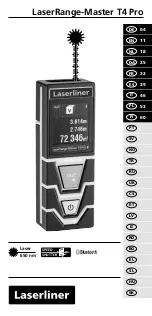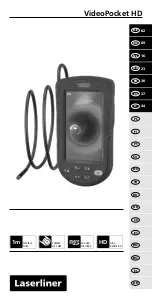
43
Ringing Deflection Yokes
Video deflection yokes are special inductors which are
used to move a CRT electron beam both vertically and
horizontally. As with flybacks, the LC103 Ringing test
provides a quick and reliable GOOD/BAD test. Yokes
should be tested while they are still mounted on the
CRT, since a shorted winding may be caused by the
pressure of the yoke mounting. Relieving the pressure
may cause the short to go away.
A deflection yoke has two sets of windings (horizontal
and vertical) which must both test good. The yoke leads
must be disconnected from the circuit. This is often
accomplished by simply pulling the yoke plug from the
chassis. The vertical windings may often have damping
resistors across them which also must be disconnected.
These resistors may be on the chassis, in which case
simply pulling the yoke plug will disconnect them. They
may also be soldered right to the yoke, meaning you will
need to unsolder one side of the resistor. Test both yoke
windings with the “YOKES & FLYBACK”
COMPONENT TYPE button selected.
NOTE: Test the vertical windings individually on yokes
that have series connected vertical windings. The
vertical windings should read within 3 rings of each
other, but may not necessarily ring “GOOD” with 10 or
more rings. Any such yoke that has a ring difference
greater than 3 rings, or an inductance value difference
greater than 10% will give problems in the chassis.
———————— WARNING —————————
Do not connect the LC103 to the yoke in the chassis
until all power has been removed, and the AC line
cord has been disconnected.
————————
ATTENTION
————————
Ne pas connecter la sonde du LC103 à un tube en
circuit avant de vous assurer que le chässis n’est plus
sous tension et que le cordon secteur est déconnecté.
To test horizontal yoke windings:
1.
Remove power from the chassis.
2.
Disconnect the yoke from the circuit by pulling the
yoke plug or unsoldering the wires.
3.
Connect the test leads to the horizontal winding.
4.
Select the “YOKES & FLYBACKS” COMPONENT
TYPE button.
5.
Press and hold the INDUCTOR RINGER test button
and read the test result in the LC103 display.
6.
If the ringer test result is 10 or more the horizontal
yoke is good. If it rings less than 10, the horizontal
yoke is defective.
To test the vertical windings:
1.
Remove power from the chassis.
2.
Disconnect the yoke from the circuit by pulling the
yoke plug or unsoldering the wires.
3.
If the yoke has damping resistors across the vertical
winding, unsolder one end of the resistor.
4.
Connect the test leads to the vertical winding.
5.
Select the “YOKES & FLYBACKS” COMPONENT
TYPE button.
6.
Press and hold the INDUCTOR RINGER test button
and read the test result in the LC103 display.
7.
If the ringer test result is 10 or more the vertical yoke
is good. If the vertical windings do not test “GOOD”,
try ringing each winding separately.
Special Note on Yokes and Flybacks:
A few yokes and flybacks have very low Q for use in
certain solid state chassis. These components may not
ring “GOOD” but may rather ring only 8 or 9 times. To
determine if they are good or bad simply add a “shorted
turn” and again check the number of rings. If the yoke
or flyback is good, the number of rings will drop
drastically when the short is added. A defective yoke or
flyback will not be affected by the shorted turn and the
number of rings will change only 1 or 2 counts if at all.
A simple “shorted turn” is a piece of solder or heavy
gauge wire formed into a loop. Press the loop close to
the windings of the yoke or wrap it around the core or
windings of the flyback.
TRANSMISSION CABLE TESTING
Testing Coaxial Cable
Coaxial cables and transmission lines have
characteristics of both an inductor and a capacitor, as
illustrated in figure 32. The LC103 ReZolver can be
used to determine the length of a piece of coaxial cable
(or the distance to a break) and the distance to a short
between the center conductor and shield. Any
breakdown in the dielectric can also be detected using
the LC103 leakage power supply.
Fig. 32: A length of coaxial cable consists of capacitance
and inductance distributed throughout the cable's length.
L
1
L
1
= Series Inductance
C
1
= Shunt Capacitance
R
1
= Shunt Resistance (dielectric leakage)
R
2
= Series Resistance
C
1
R
1
R
2















































